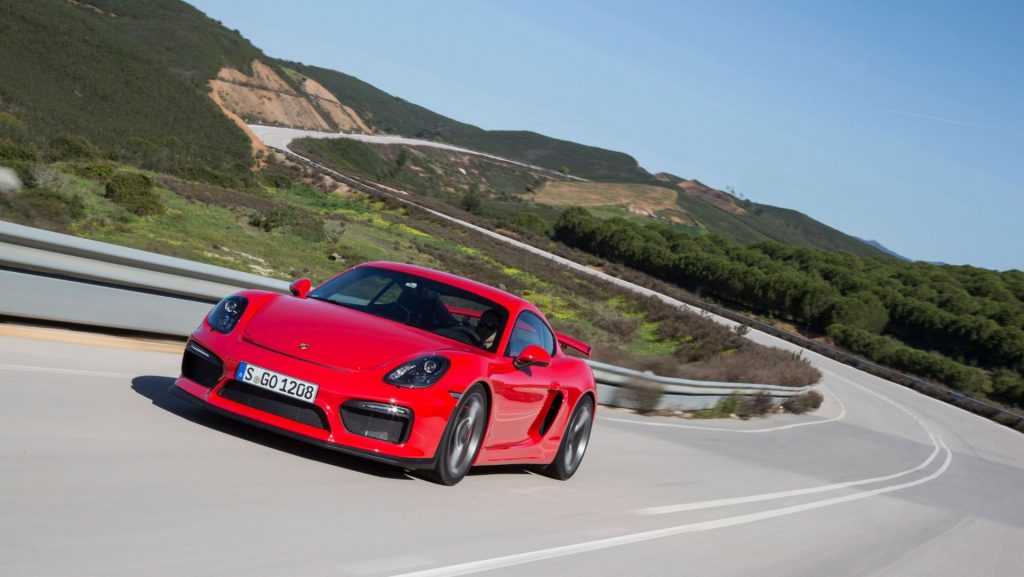Model Year Changes
The 981 didn’t change very much during its four-year production run (2013-2016). But here are some notable highlights.
2013: The 981 Boxster convertible debuts, replacing the outgoing 987 model.
2014: The 981 Cayman coupe first hits showrooms. Porsche adds the high-performance GTS trim, supplementing the base and S models.
2015: The limited-production Cayman GT4 (pictured above) rolls out, featuring the 385-hp flat six from the 911 Carrera S in addition to a host of other performance upgrades.
2016: The one-year-only Boxster Spyder launches. Like the Cayman GT4, it boasts a 3.8-liter flat six and tons of additional go-fast hardware. Confirming its track-ready nature, air conditioning and a radio are both optional. Also appearing for the first time: the Black Edition, which adds a variety of luxury upgrades to the base Boxster or Cayman.

Engines (Cayman)
Filter by fuel:
⬤ Petrol (98)2706 ccm / 6 cylinders
202kW 2013 (m)
202 kW / 275 HP
Manual transmission 6
| Acceleration 0-100km/h | 5.7 s |
| Max. speed | 266 km/h |
| Combined consumption (NEDC) | 8.2 l/100km |
| City consumption (NEDC) | 11.4 l/100km |
| Country roads (NEFZ) | 6.3 l/100km |
| CO2 emissions (NEDC) | 192.0 g/km |
| Torque | 290 Nm |
⬤ Petrol (98)2706 ccm / 6 cylinders
PDK
202 kW / 275 HP
Automatic transmission 7
| Acceleration 0-100km/h | 5.6 s |
| Max. speed | 264 km/h |
| Combined consumption (NEDC) | 7.7 l/100km |
| City consumption (NEDC) | 10.6 l/100km |
| Country roads (NEFZ) | 5.9 l/100km |
| CO2 emissions (NEDC) | 180.0 g/km |
| Torque | 290 Nm |
⬤ Petrol (98)3436 ccm / 6 cylinders
S
239 kW / 325 HP
Manual transmission 6
| Acceleration 0-100km/h | 5.0 s |
| Max. speed | 283 km/h |
| Combined consumption (NEDC) | 8.8 l/100km |
| City consumption (NEDC) | 12.2 l/100km |
| Country roads (NEFZ) | 6.9 l/100km |
| CO2 emissions (NEDC) | 206.0 g/km |
| Torque | 370 Nm |
⬤ Petrol (98)3436 ccm / 6 cylinders
S PDK
239 kW / 325 HP
Automatic transmission 7
| Acceleration 0-100km/h | 4.9 s |
| Max. speed | 281 km/h |
| Combined consumption (NEDC) | 8.0 l/100km |
| City consumption (NEDC) | 11.2 l/100km |
| Country roads (NEFZ) | 6.2 l/100km |
| CO2 emissions (NEDC) | 188.0 g/km |
| Torque | 370 Nm |
⬤ Petrol (98)3436 ccm / 6 cylinders
GTS
250 kW / 340 HP
Manual transmission 6
| Acceleration 0-100km/h | 4.9 s |
| Max. speed | 285 km/h |
| Combined consumption (NEDC) | 9.0 l/100km |
| City consumption (NEDC) | 12.7 l/100km |
| Country roads (NEFZ) | 7.1 l/100km |
| CO2 emissions (NEDC) | 211.0 g/km |
| Torque | 380 Nm |
⬤ Petrol (98)3436 ccm / 6 cylinders
GTS PDK
250 kW / 340 HP
Automatic transmission 7
| Acceleration 0-100km/h | 4.8 s |
| Max. speed | 283 km/h |
| Combined consumption (NEDC) | 8.2 l/100km |
| City consumption (NEDC) | 11.4 l/100km |
| Country roads (NEFZ) | 6.3 l/100km |
| CO2 emissions (NEDC) | 190.0 g/km |
| Torque | 380 Nm |
⬤ Petrol (98)3800 ccm / 6 cylinders
GT4
283 kW / 385 HP
Manual transmission 6
| Acceleration 0-100km/h | 4.4 s |
| Max. speed | 295 km/h |
| Combined consumption (NEDC) | 10.3 l/100km |
| City consumption (NEDC) | 14.8 l/100km |
| Country roads (NEFZ) | 7.8 l/100km |
| CO2 emissions (NEDC) | 238.0 g/km |
| Torque | 420 Nm |
Porsche Cayman generations
Cayman987C2005 — 2009
Cayman987C (1. Facelift)2009 — 2012
Cayman981C2013 — 2016
Cayman982C2016 — Now
Compare all generations
2005
987C was introduced.
2009
987C (1. Facelift) was introduced and replaced 987C.
2012
987C (1. Facelift) was introduced and replaced 987C.
2013
981C was introduced.
2016
982C was introduced and replaced 981C.
Similar cars
BMW 2er-Reihe
Compare
Lexus RC
Compare
Ferrari 812
Compare
Bugatti Chiron
Compare
Porsche 911
Compare
Audi A5
Compare
Jaguar F-Type
Compare
Aston Martin Vantage
Compare
Audi R8
Compare
Ferrari Roma
Compare
Maserati MC20
Compare
Lamborghini Huracán
Compare
Ferrari F8
Compare
Ferrari 296
Compare
Ferrari SF90
Compare
Lamborghini Countach
Compare
Bugatti Divo
Compare
Porsche Boxster
Compare
Compare against all competitors
Ownership cost
What used Porsche Cayman coupe will I get for my budget?
Between £25,000 and £27,000 will get you a good Cayman from around 2013, with an average mileage for the year and a full service history. Expect to spend £28,000-£30,000 for a 2014 car that meets the same criteria and a little more than that if you’re buying from a franchised dealer. You’ll need to fork out between £30,000 and £35,000 to secure a 2015 car. If you fancy, a GTS will set you back more than £38,000, and £70,000 plus for a GT4.
To keep up to date with used Porsche prices, use our free valuation tool to make sure you’re getting the best deal.
MPG
Even buyers of expensive sports cars have to consider fuel economy sometimes and the Cayman is respectable on this front, considering its speed. If you seek out your Cayman with the PDK gearbox, you’ll often find that the official claimed NEDC fuel consumption figure is a couple of miles per gallon better than that of a manual model. With the 2.7, this means an impressive 36.7mpg for the PDK, but 34.4mpg for a self-shifter. The swifter Cayman S with its 3.4 engine is a tad thirstier, at 35.3mpg for the automatic and 32.1mpg for the manual.
Фотогалерея Cayman (981) с 2013
Porsche в Санкт-Петербурге
- Автосалоны Porsche в Санкт-Петербурге
- Автозапчасти Porsche в Санкт-Петербурге
- Автосервисы Porsche в Санкт-Петербурге
- Авторазборки Porsche в Санкт-Петербурге
Новости Porsche
 29.04.2019Porsche Panamera отмечает десятилетний юбилей
29.04.2019Porsche Panamera отмечает десятилетний юбилей
В компании Porsche с пятидесятых годов вынашивали идею создания быстрого автомобиля для четырех человек. Первый четырехместный Porsche был создан на базе модели 356, и получил обозначение 530
подробнее
 25.03.2019Porsche представила купе-образный Cayenne
25.03.2019Porsche представила купе-образный Cayenne
Компания Porsche представила популярный спортивный внедорожник в варианте кузова – купе, который стал еще более прогрессивным, атлетичным и эмоциональным
подробнее
 11.12.2018Porsche представила Macan S с новым трехлитровым турбированным двигателем V6
11.12.2018Porsche представила Macan S с новым трехлитровым турбированным двигателем V6
Новый Porsche Macan S с новым трехлитровым турбированным мотором который прибавил 14 л.с., и теперь развивает 354 л.с.. Крутящий момент так-же вырос на 20 Нм, и теперь составляет 480 Нм
подробнее
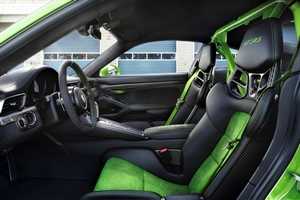 05.03.2018В Женеве пройдет мировая премьера нового GT3 RS
05.03.2018В Женеве пройдет мировая премьера нового GT3 RS
С 6 по 18 марта, на автосалоне в Женеве состоится мировая премьера самого мощного спорткара, оснащенного атмосферным двигателем от компании Porsche. Новый Porsche 911 GT3 RS развивает мощность 383 кВт (520 л.с.) при четырех литрах рабочего объема.
подробнее
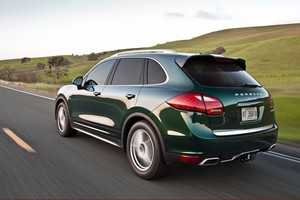 21.02.2018Porsche прекращает выпуск дизельных двигателей
21.02.2018Porsche прекращает выпуск дизельных двигателей
На заводе Porsche в Лейпциге сошли с конвейера последние Macan S Diesel и Panamera 4S Diesel укомплектованные дизельными двигателями. Немецкая компания прекращает разработку и производство двигателей на тяжелом топливе…
подробнее
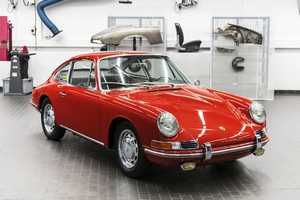 18.12.2017Музей Porsche представил отреставрированную редкую модель
18.12.2017Музей Porsche представил отреставрированную редкую модель
Компания Porsche представила отреставрированную спортивную модель под индексом 901. Редкий автомобиль 1964 года выпуска был найден…
подробнее
 30.08.2017Состоялась мировая премьера нового Porsche Cayenne
30.08.2017Состоялась мировая премьера нового Porsche Cayenne
В Штуттгарте-Цуффенхаузене состоялась мировая премьера Porsche Cayenne третьего поколения. Полностью разработанный заново автомобиль стал легче на 65 кг благодаря использованию облегченных конструкций
подробнее
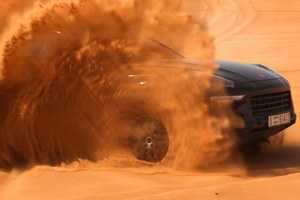 23.08.2017Новый Porsche Cayenne прошел суровые испытания (Видео)
23.08.2017Новый Porsche Cayenne прошел суровые испытания (Видео)
Третье поколение Porsche Cayenne подверглось многочисленным испытаниям на надежность в экстремальных условиях в различных климатических зонах
подробнее
 20.04.2017Первый подиум Нового Porsche 911 RSR в самом начале сезона чемпионата мира WEC
20.04.2017Первый подиум Нового Porsche 911 RSR в самом начале сезона чемпионата мира WEC
Новый Porsche 911 RSR начинает первый сезон в чемпионате мира по гонкам на выносливость (WEC) с подиума. Первая гонка сезона, состоявшая из 171 кругов, закончилась подиумом (третье место в классе GTE-Pro.) для Рихарда Литца и Фредерика Маковецки на автомобиле под номером 91.
подробнее
 02.03.2017Porsche расширяет семейство Panamera новым вариантом кузова
02.03.2017Porsche расширяет семейство Panamera новым вариантом кузова
На Женевском автосалоне компания Porsche представит семейство Panamera в новым варианте кузова. С большой задней дверью, низким бортом багажника, увеличенным объемом багажного отсека и посадочной формулой 4+1…
подробнее
Our recommendations
Engine
For the best possible Cayman driving experience, a purist would recommend trying to find a manual car, but the PDK automatic is nonetheless a truly impressive thing. So equipped, the car is actually a fraction quicker and more economical than the equivalent manual model, and it’s easier to punt around town as well as down a twisty road. Whether you should seek out the 2.7 or 3.4 engine is a matter worth some debate because both are fantastic. The 2.7 will cost a little less to run, perhaps, and for that reason it would get our nod, but we wouldn’t blame you in the slightest if you fell for the charms of the 3.4.
Things to look out for:
Earlier cars suffer corrosion on brake parts, particularly caliper mounting bolts.
Get a diagnostics check to see if the DME (engine management) mileage corresponds with dash clock; also examine fault codes, and check for over-revving.
Look for front radiator damage from debris through the bumper grilles; if neglected, corrosion can set in.
Check the air-con works, with no leaks under the front of the car. The condensers can corrode.
Exhaust fixings corrode, particularly on higher-mileage cars, and can eventually result in a blowing exhaust.
Heavy clutch on a manual car is a sign it’s on its way out before it slips. I’ve seen clutches needed on cars with 40k miles. Budget around £1100.
If you want to get a Porsche warranty, or keep an existing one, then check the car has N-rated (Porsche-approved) tyres and watch out for other modifications using non-standard parts.
Introduction
The 981-generation Boxster convertible first appeared in showrooms in 2012 (as a 2013 model) and had a relatively brief four-year production run (2013-2016) before being replaced by the current generation (982). The 981 Cayman coupe followed a year later (as a 2014 model) and also ended in 2016.
The 981 was a complete makeover of the outgoing version, the 987. All-new sheetmetal by longtime Porsche designer Tony Hatter, who also penned the iconic 993, preserved the basic shape but gave it sharper and more athletic lines. Most would agree: the 981 is a big upgrade over the 987 in the looks department.
And that beauty isn’t just skin deep. The 981’s new body is 40% stiffer than the prior generation’s. While it shares the same basic dimensions with the outgoing car, the 981’s wheels are pushed closer to the extremities for better handling and more interior room. The 981 is slightly lighter, too, thanks to the increased use of aluminum and magnesium in its construction.
The improvements continue inside the cabin, which borrows upscale design elements from Porsche’s full-size grand tourer, the Panamera, giving it an artful balance of style, function, and simplicity.
Porsche also swapped the 987’s traditional hydraulic steering for electric boost in the 981. Normally this would be cause for consternation. But the engineers managed to make the change without losing any of the marque’s trademark steering feel.
In their 981 road test at the time, Car and Driver declared, “Consider this the sports-car enthusiast’s gold standard, rapidly approaching platinum.” The magazine also named both the Boxster and the Cayman to their annual 10Best List each year that the 981 was sold.
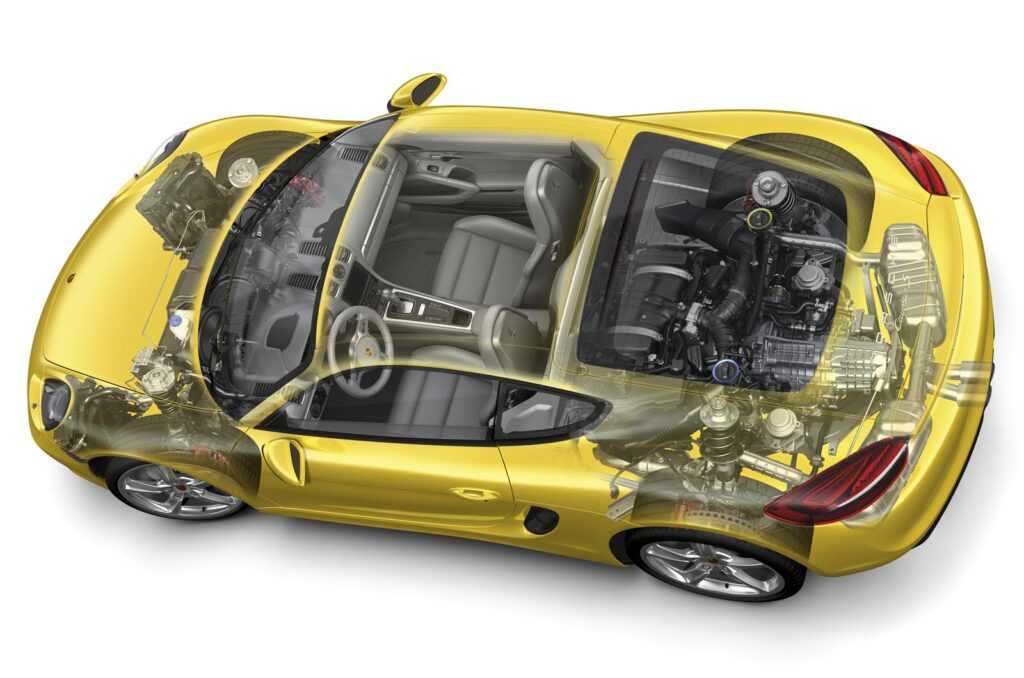
What about running costs?
Services are every two years or 20,000 miles, along with a brake fluid swap, and alternate between minor and major. RPM uses Porsche genuine parts, and charges from £438 for a minor service all in, and £795 for a major, which includes brake fluid and plugs. Daly adds a caveat: ‘As the cars start to age, we suggest an annual oil change primarily to ensure the car is being checked by a professional, but also to keep the oil in peak condition.’
Reliability is good. Daly at RPM: ‘The earliest 981s are on a 2012. We’ve had a lot of them through the showroom and workshop, and typically it’s just the usual consumables. We have had a few with leaking PASM dampers – it’s uncommon, an easy spot on a ramp, and can be sorted quickly for £1400 all in.

‘We’ve also seen cars where the PSM light is on and the brake lights are also on – it’s caused by the bushes on the actual pedal binding and stopping the pedal from fully returning. It is a simple fix if you have the specific tool required, but if left can cause the brakes to overheat and require replacement. Otherwise buy from a business with experience of the 981 and you won’t get into trouble.’
Engines and Transmissions
In base trim, the 981 is fitted with Porsche’s 2.7-liter horizontally-opposed six-cylinder engine mounted amidships. It produces a peak of 265 horsepower and 206 lb-ft of torque and is mated to either a standard six-speed manual transmission or an optional seven-speed automated manual (aka “PDK” in Porsche-speak) routing power the rear wheels. With either ‘box, the naturally-aspirated flat six pushes the two seater to 60 miles per hour in 5.4 seconds, according to the manufacturer.
Opting for the pricier “S” trim gets you a 3.4-liter version of the same engine, making 315 horsepower and 266 lb-ft of torque, backed by the same gearbox choices driving the rear wheels. The S’s additional oomph shaves almost a full second off 0-60 times compared to the base model.
For the 2014 model year, Porsche added the high-performance “GTS” trim to the 981. It features a slightly modified version of the S’s 3.4-liter flat six, upping output around 5% to 330 horsepower and 273 lb-ft of twist. The GTS also adds a host of other desirable upgrades, which we’ll discuss in more detail below.
If that isn’t powerful enough for you, two special editions of the 981 up the ante considerably. Both the Cayman GT4, which first appeared in 2015, and the Boxster Spyder, which debuted a year later (as a final-year-only model), borrow a 3.8-liter flat six from their bigger brother, the 911 Carrera S. In the GT4, it’s capable of 385 horsepower and 309 lb-ft of torque, while in the Spyder it produces the same torque figure but 10 fewer ponies. In either car, only a six-speed manual was offered.
Before you get too excited, though, we should note that both special edition 981s were produced in limited numbers. Porsche made around 2500 of each, with less than half that number coming to the US. As a result, they’re somewhat rare and very much pricey. Most for sale these days fetch $100,000 or more, which is collector car money.
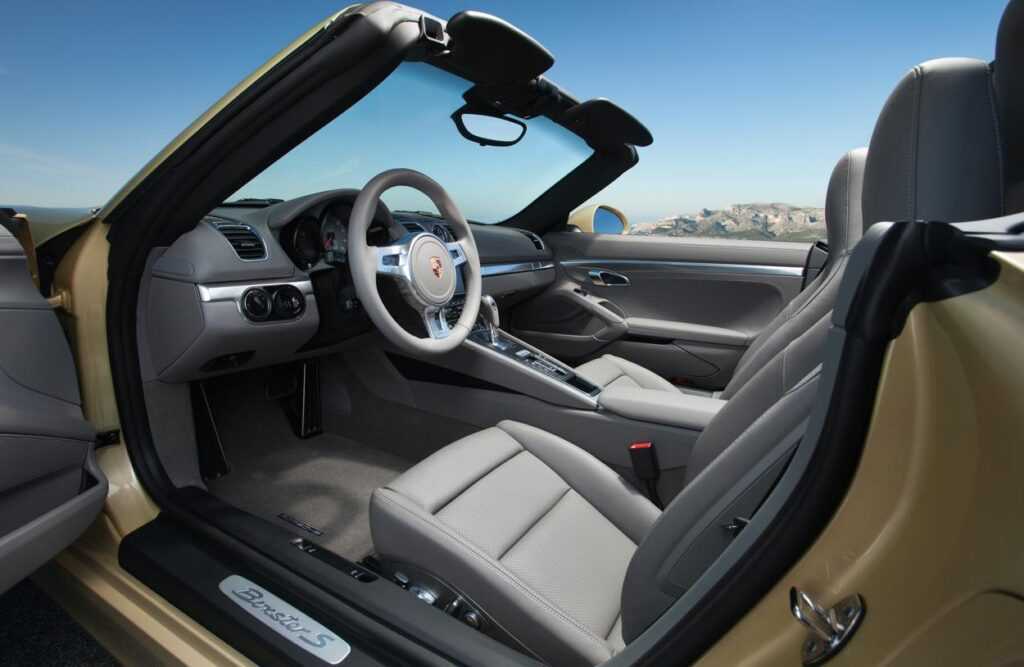
Buying Tips
A variety of factors has conspired to keep 981 prices relatively high on the used car market. One is that Porsche only made the 981 for four years and only sold around 5000-7000 units per year (both Boxsters and Caymans). So they’re not exactly abundant. Another is that, as we’ve mentioned, the 981 is the last generation to offer a flat-six engine as standard equipment. Plus, as noted above, the 981 has so far proved to be one of the more reliable used sports cars you can buy. And, of course, they are simply outstanding to drive.
Still, depreciation has done a bit of work over the last few years, dropping values around 25-40% from new for the most common 981 variants, including the base and S models. Prices for rarer versions, though, such as the Cayman GT4 or the one-year-only Boxster Spyder, have actually gone up.
In a recent search on Autotrader, we found about 450 examples of used 981s for sale nationwide, split almost evenly between used Boxsters and used Caymans. They ranged in price from a high of $120,000 for a sub-5000-mile Cayman GT4 to a low of $31,000 for a base 2013 Boxster with over 100,000 miles.
Generally speaking, it takes around $35,000 to $40,000 to buy a truly excellent used 981 — something like this well-equipped, one-owner 2013 Boxster with just under 50,000 miles, which is listed for sale by a dealership in Tennessee for $39,926. We’d love to have that one in our garage. Considering that’s about the same amount as a new Miata with the Brembo package, we think this is a very good value. And the 981 is likely to retain its value far better than any other sports car in this range.
If you have your heart set on a S or even a GTS, you’ll have to pony up a little more, though. A well-kept 981 Boxster S with about 50,000 miles will set you back $50,000 to $55,000, while a similar GTS is typically going to cost another ten large. If you have the bucks, by all means go for it. But we think most buyers, short of those who spend their weekends at the track, will be just as happy behind the wheel of a base 981.
Over $70,000 buys you a barely-used (under 10k miles) Boxster or Cayman S loaded with features or an outstanding GTS with less than 25,000 miles on the clock. At this price point, though, you might want to consider stepping up to a used Porsche 911 instead.
That is, unless you really want to get your mid-engine fix. Which we’d totally understand.
Photos courtesy of Porsche
Which model 981 Cayman to go for?
Two basic flavours are available. The entry-level model is fitted with a 2.7-litre flat six with 271bhp and 214lb ft. While it’s a little flat below 4500rpm, it’s by no means a poor relation to faster versions, still plenty quick enough, and soul-stirring when you wring it out on a country road – which, really, is the whole point. If you aim for a high-miler that’s light on options you should be able to find one from around £26,000. Pay a little more and you’ll get lower miles; we found a car on 37k miles at a main dealer with 24 months’ warranty for £31k.
‘Early base 2.7 manual cars are a very good buy: low-cost Porsche ownership without the worry of big bills ruining your summer holiday plans,’ says Nick Cole of the Cayman Owners’ Club. ‘It’s the “I want to sleep at night” Porsche.’
The Cayman S makes for a highly tempting upgrade. It leapfrogs ahead with a 3.4-litre six – the same as its predecessor, and a slightly detuned version of the 911 Carrera’s, with 310bhp and 273lb ft. You also get 19-inch alloys, part-leather interior and bi-xenon headlights. Prices typically start around £30k.
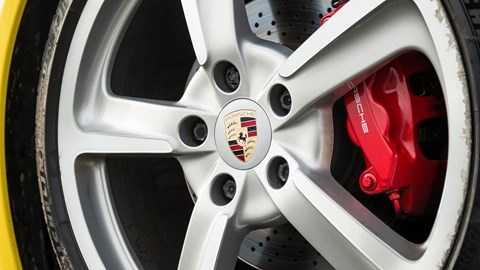
Cole describes the 981 as ‘definitely the most spec-sensitive used Cayman.’ Key options include 20-inch alloys and PASM dampers which, when combined, top off the gorgeous looks while preserving ride quality. You’ll find plenty of cars with both upgrades. Less common is the Porsche Torque Vectoring option, which includes a limited-slip differential – desirable, but not essential given the Cayman’s high grip levels and relatively modest torque, says Cole.
Other options include vented seats, dynamic headlights, 18-way adjustable seats, keyless entry and sat-nav – inessential, given the quality of today’s phone apps.
And at the top end of the Cayman tree?
For those with more cash, the Cayman GTS makes a tempting proposition. Not only does it increase power from the 3.4 flat-six to 335bhp, it also bundles key desirable options including adaptive dampers (or no-cost sports suspension, lower by 20mm but giving a lumpier ride), the Sport Chrono package, sports exhaust and dynamic bi-xenon headlights.
The GTS cost £55k new in 2015, yet cars with 10k-30k miles are still advertised for £50k-£60k today. They’re great cars with a lovely spec, but we actually found the standard car more playful on its slightly softer suspension.
The ultimate 981 is the 911-bothering Cayman GT4 with its 3.8-litre six and 380bhp, yours for low £70ks to almost £100k. But then we’re getting away from our original premise, and as a do-it-all sports car on a budget, and a future classic that’s likely to hold its value or appreciate, you can’t really go wrong with a Cayman or Cayman S.
Porsche 718 Cayman (2016+ Models)
Last but not least is the newest and current generation of the Porsche Boxster and Cayman – the 718. Internally, the chassis is known as the 982. However, it’s badged as the 718 Cayman so it isn’t often referred to as the 982. Anyway, Porsche has continued building on the Cayman model and it’s now available in almost too many trims to list. There include:
- Base
- T
- S
- GTS 4.0
- GT4
- GT4 RS
Base Cayman’s are still entry-level Porsche’s with an MSRP in 2022 starting at $63,400. That pales in comparison to the $106,100 MSRP of the base 911. However, the GT4 and RS come in at $106,500 and $149,100, respectively.
The GT4 is a tad slower to 60mph when compared with a base 911. However, it’s fair to argue the overall handling and performance are superior to that of the 911. Then, of course, there is the Porsche Cayman GT4 RS which delivers an incredible 3.2 second 0-60mph time. It does that with a 4.0L NA boxer engine that revs all the way to 9,000 RPM’s. Sign us up.
718 Cayman Performance and Specs
With the 718 Porsche totally changed the engine line-up for the Cayman. The base Cayman and Cayman T receive a 2.0L flat-4 turbo engine while the S and GTS models use a 2.5L flat-4 turbo engine. Then there’s the 4.0L NA engine for the GT4, GTS 4.0, and GT4 RS. Specs for a few of the 718 Cayman models are as follows:
2022 718 Cayman Base
- 2.0L flat-4 turbo
- 300 horsepower / 280 lb-ft
- 3,040 lbs curb weight (manual)
- 4.5 seconds 0-60mph (Sport Chrono Package w/ PDK)
Even the base Cayman of today offers more power and performance than the original Cayman S. This is thanks to the 2.0L turbo engine that delivers 300hp and 280 lb-ft. Of course, Porsche has done a great job of keeping the Cayman right in the 3,000 – 3,100 pound ballpark its whole life.
2022 Porsche 718 Cayman GT4
- 4.0L NA flat-6
- 414 horsepower / 317 lb-ft
- 3,208 lbs (manual), 3,276 lbs (PDK)
- 4.2 seconds 0-60 (manual), 3.7 seconds (PDK)
Again, the GT4 isn’t even the highest-end 718 Cayman as the GT4 RS delivers even more performance and handling. Regardless, the GT4 is good for 414 horsepower through its 4.0L engine capable of revving to 8,000 rpm. Add the optional PDK transmission and you’ll find yourself launching to 60mph in a mere 3.7 seconds. The GT4 is more expensive than a base 911, but we do think the Cayman delivers great value at this price point.
981 Cayman: a new benchmark
The 981 Cayman was – and remains – a benchmark car, and when it arrived in 2012 came closer than ever to stepping on a 911’s toes. The slightly dumpy design of earlier models was replaced by a sleeker, lower look that ratcheted up the desirability; it resulted from the combination of doors that were no longer shared with the 911, a longer wheelbase, wider tracks and lower overall height.

There were also big gains in equipment, space and refinement, and, most importantly, this new Cayman was even better to drive, with a more supple and playful chassis. Key to that appeal was the flat-six engine, which gave up a little in performance versus a 911 but barely anything in its response, soundtrack and feelgood factor. It seemed almost jarringly exotic considering the £40k price Porsche asked when new.
Then Stuttgart slotted a 911 Carrera S engine into the GT4 and, finally, allowed a 911-beating Cayman off the leash. Arguably that’s the pinnacle of Porsche’s Cayman development, and in some ways things went backwards with the arrival of the 982 model in 2016, marketed as the 718 Cayman. Essentially a comprehensive update, with tangible improvements to the super-sharp chassis, it also introduced a four-cylinder engine.
The new turbocharged unit’s significant increases in power,torque and efficiency couldn’t compensate for the loss of the high-revving flat six, its chainsaw soundtrack and the tingly emotion of revving it out to 7500rpm. It’s why buyers pine for the previous model. That high demand has kept prices at a healthy level, but there are enough cars around to stop them going crazy.
‘The six-cylinder 981s have almost stopped depreciating, as buyers have not warmed to the four-cylinder turbo 718s yet,’ says Greig Daly of RPM Technik. ‘I don’t see this changing any time soon either.’

987, 981, & 718 Cayman Reliability
Is the Porsche Cayman reliable? Yes, in general the Cayman offers good reliability. Porsche actually has a pretty good reliability reputation- unlike other German manufacturers like Mercedes and BMW. However, it’s important to keep in mind that a Porsche is still a high-end performance car.
While the Cayman is reliable it can be a more expensive car to own and maintain compared to your standard A to B car. That’s simply part of the nature of owning a true drivers car like the Porsche Cayman.
As with any car, maintenance is one of the keys to a long, reliable life for the Cayman. Change fluids on time, use quality oils, keep up on other standard maintenance, and fix problems in a timely manner if they occur. Do all this and the Cayman can deliver good overall reliability.
Porsche Cayman Years to Avoid
Are there any Porsche Cayman years to avoid? No, we don’t believe there are any Cayman years to completely avoid. The 987, 981, and 718 Cayman are all subject to their own unique problems. None of them are necessarily major problems that are also truly common.
Some may be scared away from the 987 Cayman due to cylinder scoring and IMS issues on the M97 engine. Again, those problems are truly common and only affect a very small percent of Cayman’s. Otherwise, the 987 and 981 Cayman with the early PDK transmission may run into some issues.
Newer PDK’s are an improvement but aren’t totally exempt from problems. However, the newer 718 Cayman does have some reliability concerns of its own due to the turbocharged nature.
Point is – each year and generation of the Cayman has its own set of issues you may run into. In general, older Cayman’s will need a bit more TLC due to age and mileage. Otherwise, there isn’t really a specific year that is always worse than other years. Look for a clean example with a good maintenance history and the Cayman is an excellent car.
Is the Porsche Cayman Worth It?
Whether or not the Porsche Cayman is worth it depends on many individual factors. If you’re looking for more options, features, and luxury then the Porsche 911 may be the better buy (or another model whether it be Porsche or not). However, if you’re looking for a Porsche that delivers great value then look no further than the Cayman.
Let’s assume performance, handling, and overall driving experience are the end goal. In this case, we believe the Cayman can offer a much better value than the Porsche 911. Remember, the Cayman GT4’s MSRP isn’t much more than a base 911. Between the two it’s safe to say the GT4 is the sportier, more exciting car.
Also, when looking at used Cayman’s they’re generally much more affordable than similar year 911’s. Point is – from a value perspective the Cayman certainly offers a lot. It might be an entry-level Porsche but there’s a reason Porsche has a great reputation for building awesome drivers cars. Even their lower-end models like the Cayman live up to the Porsche name, and you’ll be hard pressed to find a better value.
Problem Areas
Fortunately, the 981-generation Boxster and Cayman models don’t suffer from the common ailments of preceding generations, such as failing IMS bearings or cylinder scoring. In fact, in researching this article, we’ve been hard pressed to uncover any significant concerns (other than a recent recall for which the fix is covered by the factory). Perhaps this is why Porsche in recent years has consistently been named among the most reliable automakers, including the top ranking in dependability from JD Power during the period when the 981 was sold.
As with any used car, you’ll want to seek out only well-cared-for examples, which have been serviced on time and at a Porsche specialist. We recommend shunning any cars with significant accident repairs or other major bodywork in their past. That’s because the integrity of the car’s structure can be compromised as a result of a hard hit and/or major metalwork. Also, repainted panels tend to wear faster and less evenly than those with factory original paint. There are unblemished specimens out there, so it’s best to move on should you find evidence of this sort of damage.
Also, before you spend thirty grand or more on a used 981, we highly recommend hiring a Porsche specialist to evaluate it. For about $250, they’ll provide you with a thorough inspection of the entire car. This can reveal potentially deal-breaking issues, such as excessive engine or suspension wear, or minor things that you can use as bargaining points, like worn brake pads or aging tires. Either way, it’s easily worth the money to complete a professional inspection prior to finalizing any used car purchase.
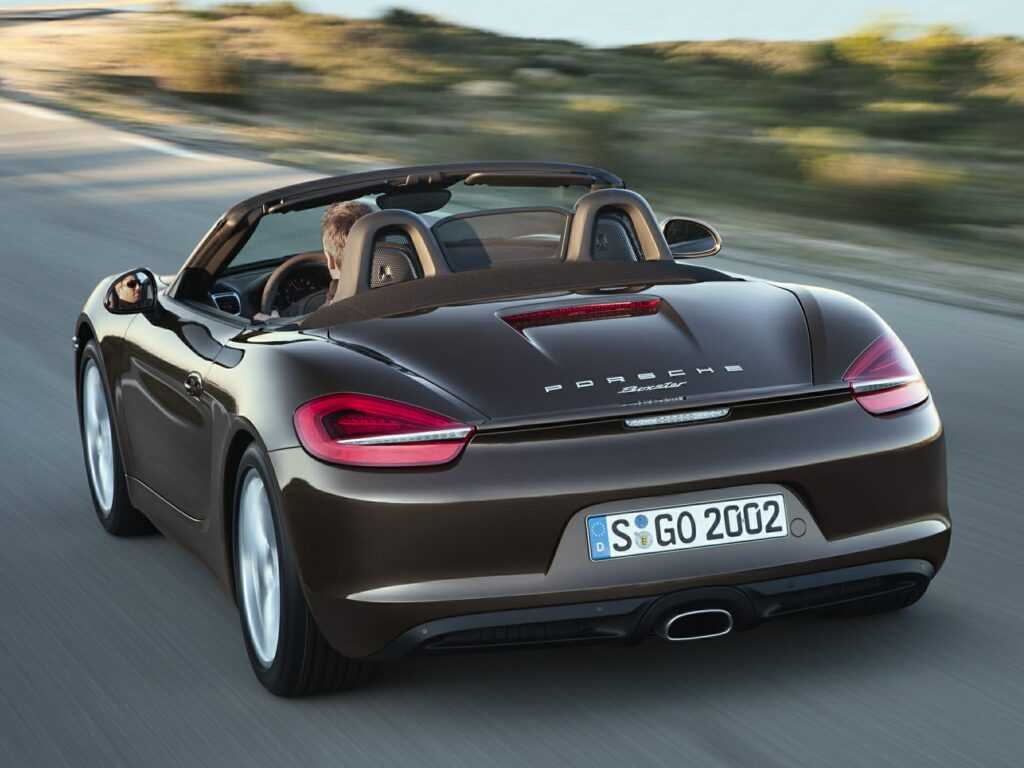
Porsche Cayman Buyer’s Guide Summary
The Porsche Cayman began in model year 2006 as a coupe version of the Boxster. It’s an entry-level, mid-engine sports car from Porsche that delivers in many ways. If you’re looking to get into a Porsche then the Cayman may be a great buy.
Cayman’s are currently on their third and current generation – the 718 Cayman. Prior to that there was the 987 Cayman from 2006 to 2012 and the 981 from 2014 to 2016. With each new generation, Porsche continued adding more and more variants of the Cayman. As of now, there are even some models that best the 911 in many ways.
Not only is the Cayman an excellent drivers car, but it also delivers good overall reliability. No car or engine is perfect, though. Each model and year of the Porsche Cayman is subject to its share of issues. None are necessarily better or worse, so there aren’t any specific years of the Cayman to avoid.
Ultimately, we believe the Porsche Cayman is a compelling option that’s a great value. Looking at newer models, a 718 Cayman GT4 shares a similar MSRP to a base 911 Carrera. Dollar for dollar we believe the Cayman is the better buy. That’s just one example but it applies across much of the lineup.
Manual or auto ‘box?
The biggest dilemma centres around the manual or dual-clutch automatic gearbox, the latter adding over £2k to the sticker when new. Both are satisfying, and the PDK certainly has a greater breadth of ability. It combines the ease-of-use of an auto in traffic with super-incisive shifts that actually enhance the crispness of the powertrain and make keeping it in that sweet spot at the top of the rev range even easier.
Cole reminds us that these cars were sometimes afflicted with Porsche’s crazy rocker buttons on the steering wheel, which were quickly dropped. ‘OEM paddles and a new steering wheel can be retrofitted by a respected specialist or Porsche main dealer, though, so bear that in mind if an otherwise perfect car appears.’ Daly adds: ‘If the car is PDK, then having Sport Chrono is a plus as this will, amongst other things, allow you to change the shift speed on the gearbox.’

However, we’d guess that those hankering after one of the last great naturally aspirated motors will prefer to pair it with a manual. The six-speeder’s beautifully precise shift quality and perfectly weighted and placed pedals reward that choice. Ultimately, says Daly, there’s no wrong decision, despite the fierce debate between advocates of the different transmissions. ‘The market is good for all 981s, so long as the service history is with either a respected specialist or Porsche.’
Features and Options
Considering that the base 981 Boxster started around $50,000 when new, it’s not too surprising that it came fairly well equipped. Standard features include 18-inch wheels, a power-folding soft top, cruise control, six-way adjustable seats, air conditioning, and a Bluetooth-enabled audio system.
The S trim originally stickered for about ten grand more. In addition to a larger 3.4-liter engine, that extra cash bought you 19-inch wheels, red-painted calipers, bi-xenon headlights, and an upgraded seven-speaker stereo.
In typical Porsche fashion, the available options list was exhaustive. Among the more popular choices: the Convenience package, which bundles heated seats, dual-zone climate control, and a wind deflector, and the Premium package, which adds adaptive headlights, 10-way power seats, and navigation.
On the sporting front, Porsche offered two desirable add ons. The Sport Chrono package includes launch control (with the PDK transmission only), adjustable chassis settings, dynamic transmission mounts (which help to stiffen the structure during spirited driving), and a lap timer. Also available was an adaptive suspension, which the manufacturer calls Porsche Active Suspension Management (PASM). It allows the driver to select a suspension stiffness to match the occasion, whether it’s a Sunday cruise or a day at the track.
For 2014, Porsche bundled those last two options — plus 20-inch wheels, a sport exhaust, and a slightly more powerful version of its 3.4-liter flat six — to create the GTS trim. Its MSRP was well over $70,000, and it remains a highly enticing 981 spec today.
For the 981’s final year, Porsche introduced the Black Edition. Starting with the base 2.7-liter car, it adds a host of popular features, including 20-inch wheels, adaptive xenon headlights, heated seats, dual-zone climate control, a sport steering wheel, front and rear parking sensors, navigation, and a seven-speaker audio system. Think of it as the 981’s luxury version.
Other notable à la carte options include: a limited-slip differential, electronic torque vectoring, ceramic brakes, adaptive cruise control, heated and ventilated sports seats, a heated steering wheel, and a top-of-the-line 12-speaker Burmester audio system.
